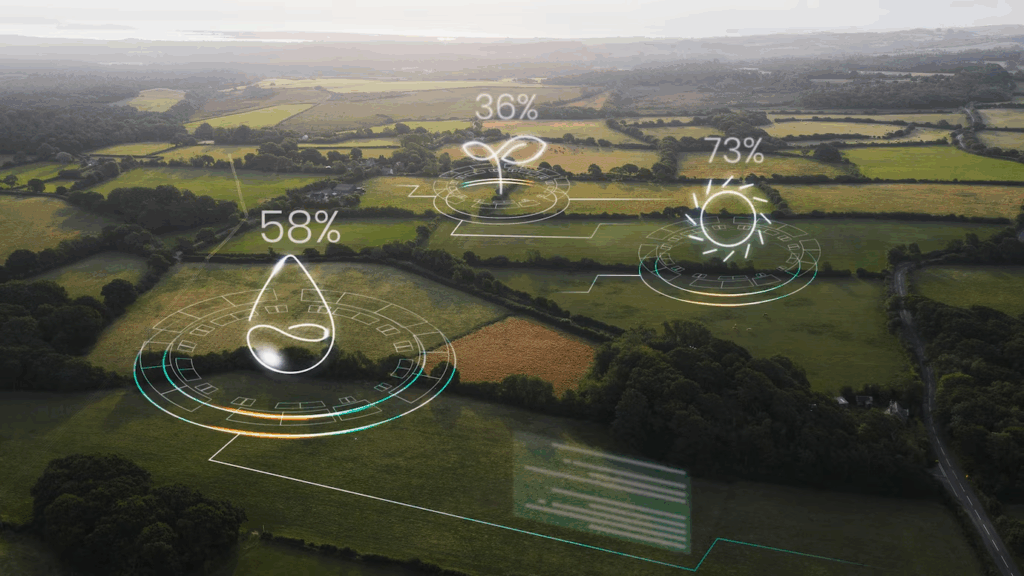
In any workplace, ensuring the safety of employees, the environment, and valuable assets is crucial. Whether you work in a factory, office, laboratory, or warehouse, understanding the air quality around you is essential. This is where an advanced atmospheric monitoring system comes into play.
An atmospheric monitoring system is designed to track air quality by measuring different environmental factors like gases, pollutants, temperature, humidity, and particulate matter. This blog will explain the importance of such systems in your workplace, how they can protect your staff, and why integrating them is a smart move for your business.
Why You Need an Atmospheric Monitoring System
When it comes to creating a safe and healthy work environment, it is essential to have complete control over the air quality. Poor air quality can lead to health problems, reduce productivity, and even cause accidents. An atmospheric monitoring system helps detect harmful substances in the air, ensuring that you stay ahead of potential risks before they turn into major issues.
Monitoring Air Quality to Ensure Safety
Air quality in a workplace directly affects the health of your employees. For example, high levels of carbon monoxide, nitrogen dioxide, or volatile organic compounds (VOCs) can cause a range of health issues, including headaches, dizziness, and respiratory problems. An atmospheric monitoring device can detect these hazardous substances in real time, so you can act quickly and keep your team safe.
Maintaining Regulatory Compliance
Different industries have set safety standards for air quality. If you don’t comply with these regulations, your business could face penalties, fines, or even forced shutdowns. An atmospheric monitoring system ensures that you are consistently meeting these standards by providing you with real-time data that is both accurate and reliable.
Preventing Accidents and Losses
A dangerous chemical leak or an unnoticed gas build-up can be catastrophic, not just for your employees but also for your property. By using an atmospheric monitoring system, you can detect changes in air quality and prevent accidents before they happen. This proactive approach helps protect both people and assets from harm.
Benefits of Real-Time Monitoring
The true value of an atmospheric monitoring system lies in its ability to offer real-time asset monitoring. Immediate access to data allows you to make informed decisions on the spot, preventing potential risks from escalating.
Immediate Action with Real-Time Alerts
With real-time asset monitoring, you can receive instant notifications when the air quality in your workplace falls below acceptable levels. This is incredibly helpful because it allows you to take immediate action—whether that’s evacuating the building, ventilating a space, or addressing the root cause of the problem. The earlier you act, the less likely it is that the situation will become dangerous.
Continuous Monitoring for Long-Term Safety
It’s important to monitor air quality consistently. With an advanced atmospheric monitoring system, you don’t have to worry about manual checks. The system continuously tracks environmental factors, so you are always aware of the air quality in your workplace. This ongoing vigilance ensures that even small changes are caught before they become serious issues.
How the System Works
Now that we’ve covered why you need an atmospheric monitoring system, let’s take a closer look at how it actually works. These systems come equipped with various sensors and technologies that collect data from the environment, which is then analyzed in real time. Depending on the model, the system can measure a variety of factors, such as:
- Gases: Carbon dioxide, methane, and carbon monoxide are just a few examples.
- Particulate Matter: Dust, smoke, and other small particles in the air.
- Temperature and Humidity: These can affect both the comfort and safety of the work environment.
The atmospheric monitoring device collects data from these factors and either displays it directly or sends it to a cloud-based platform where you can access the information. Some advanced systems even offer predictive analytics, which can help forecast future air quality trends based on current and past data.
Sensors and Data Collection
The sensors in an atmospheric monitoring system are the key to capturing real-time data. These sensors can measure specific gases or particulate matter, and some systems allow you to customize the types of pollutants you want to track. For instance, if your workplace handles chemicals, you can set up sensors to monitor hazardous fumes, ensuring immediate detection.
Cloud-Based Data for Easy Access
Most modern atmospheric monitoring devices are equipped with cloud-based platforms, which allow managers and safety officers to access data remotely. This is extremely useful for businesses with multiple locations, as you can monitor air quality across all sites in one centralized dashboard. You’ll also be able to generate reports and track long-term trends, helping you make smarter decisions about maintaining a safe work environment.
Integration with Other Safety Systems
An atmospheric monitoring system doesn’t just protect air quality; it can also integrate with other safety systems in your workplace, making it easier to manage your overall safety strategy. For example, the monitoring system can be connected to your fire alarm system, ventilation controls, or emergency response protocols.
Coordinating with Ventilation Systems
If your atmospheric monitoring system detects a dangerous level of gases or pollutants in the air, it can communicate with your ventilation system to increase airflow and dilute the dangerous substance. This automation can significantly reduce the risk of exposure to hazardous air while also improving overall air quality.
Linking with Emergency Response Systems
In extreme situations, an atmospheric monitoring system can be integrated with your emergency response systems. If the air quality reaches dangerous levels, the system can trigger alarms, notify emergency responders, and even trigger safety protocols like evacuation procedures. This fast coordination could make the difference between a minor issue and a large-scale disaster.
How to Choose the Right System for Your Workplace
Selecting the right atmospheric monitoring system for your workplace involves considering several factors, including your specific needs, the size of your facility, and the type of environment you work in.
Consider the Size of Your Facility
Larger facilities, such as manufacturing plants or warehouses, may need a more complex system with multiple sensors spread across the site. Smaller offices or laboratories may only require a simpler solution. It’s important to assess the layout and operations of your workplace to choose a system that provides adequate coverage.
Identify Key Pollutants to Monitor
Different workplaces have different air quality concerns. If you are working in a chemical plant, for example, you’ll need sensors that detect specific gases or VOCs. If you work in a factory, dust and particulate matter could be a bigger issue. Identifying the pollutants that pose the greatest threat in your workplace will help you choose the right atmospheric monitoring device.
Choose a System That Fits Your Budget
While it’s tempting to invest in the most advanced system on the market, it’s important to choose one that fits your business’s budget. Keep in mind that the most expensive system may not always be the best for your particular needs. There are many affordable options that offer essential features without breaking the bank.
Get Real-Time Asset Monitoring Now!
Protecting your workplace with an advanced atmospheric monitoring system is a smart move that can safeguard your employees, your assets, and your business. By continuously monitoring air quality and providing real-time data, these systems allow you to take immediate action when needed and ensure that your workplace meets all safety regulations.
Whether you’re looking to improve air quality, reduce risks, or simply stay compliant with regulations, an atmospheric monitoring device can provide the support you need. Incorporating real-time asset monitoring into your safety strategy ensures that you’re always one step ahead of potential threats, making your workplace safer for everyone involved.
So, why wait? Start taking proactive steps today to protect your workplace with the power of an atmospheric monitoring system. Your employees—and your bottom line—will thank you.
FAQs (Frequently Asked Questions)
An atmospheric monitoring system helps protect the workplace by detecting harmful gases, pollutants, or dangerous air quality conditions before they pose a risk to health or safety. It provides real-time data that allows you to take action quickly to reduce risks, ensuring a safe work environment for your employees and protecting assets.
An atmospheric monitoring device can detect a wide range of pollutants, such as carbon dioxide, carbon monoxide, volatile organic compounds (VOCs), particulate matter, and other harmful gases. The system can be customized to focus on the specific pollutants that are most relevant to your workplace.
Real-time asset monitoring in an atmospheric monitoring system means that air quality data is collected and analyzed instantly, providing live updates on environmental conditions. This enables you to take immediate action, such as adjusting ventilation or evacuating a space, to protect employees and assets from harm.
Yes! Most modern atmospheric monitoring systems are equipped with cloud-based platforms, allowing you to monitor air quality remotely. This gives you access to real-time data from anywhere, making it easier to manage safety across multiple locations or facilities.
To choose the right atmospheric monitoring system, you need to consider the size of your workplace, the types of pollutants you’re concerned about, and your budget. Assess the specific risks in your environment and select a system that can meet your needs, whether it’s for small office spaces or large industrial plants.




